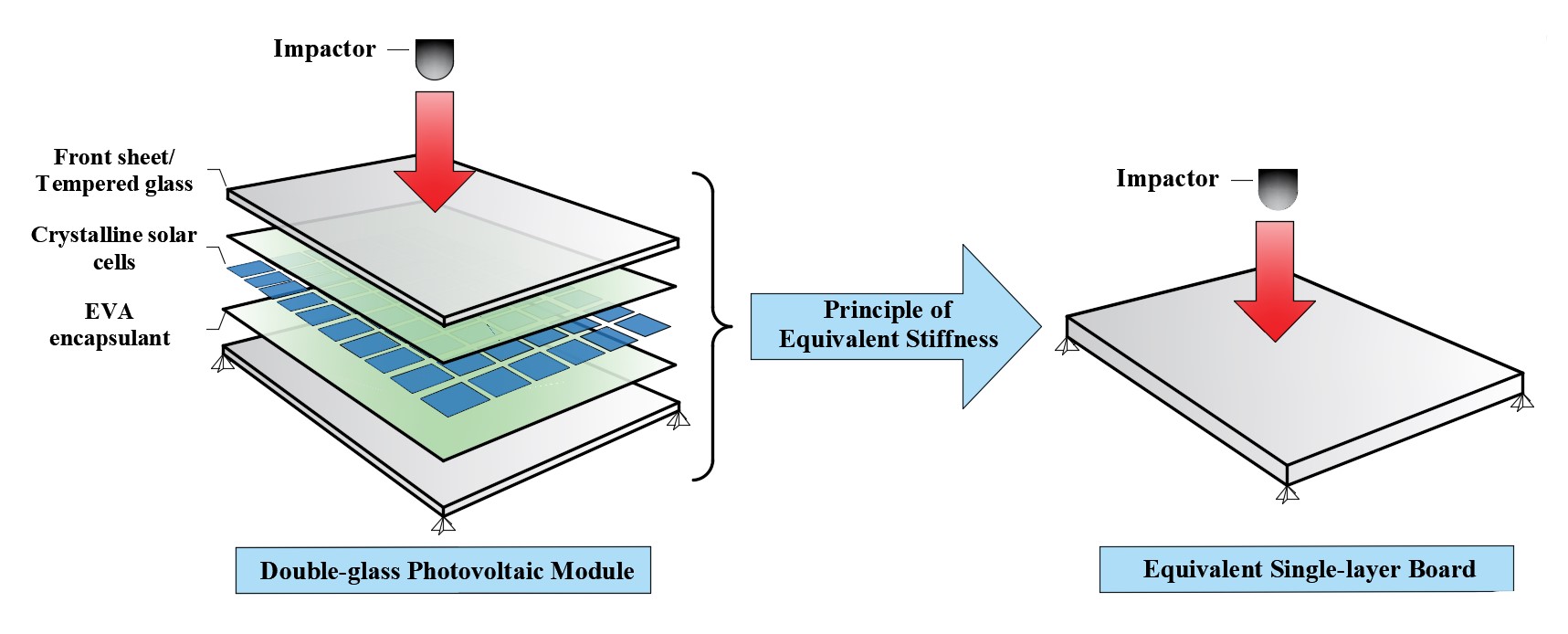 Open Access
Open Access
ARTICLE
Analysis of the Impact Resistance of Photovoltaic Panels Based on the Effective Thickness Method
1
College of Architecture and Environment, Sichuan University, Chengdu, 610065, China
2
Institute of New Energy and Low-Carbon Technology, Sichuan University, Chengdu, 610207, China
3
Suzhou Talesun Solar Technologies Co., Ltd., Suzhou, 215542, China
4
Department of Architecture and Built Environment, Faculty of Engineering, University of Nottingham, University Park,
Nottingham, NG7 2RD, UK
5
National Photovoltaic Product Quality Supervision and Inspection Center, Chengdu, 610065, China
* Corresponding Author: Lingzhi Xie. Email:
Journal of Renewable Materials 2022, 10(1), 33-51. https://doi.org/10.32604/jrm.2021.016262
Received 21 February 2021; Accepted 19 March 2021; Issue published 27 July 2021
Abstract
Based on the recent development of renewable energy utilization technology, in addition to centralized photovoltaic power plants, distributed photovoltaic power generation systems represented by building-integrated photovoltaic systems are frequently employed for power supply. Therefore, in the architectural design, the double-glass photovoltaic module used in the integrated photovoltaic building system puts forward a higher load-bearing capacity requirement and the corresponding simplified method of carrying capacity check. This article focuses on the simplified method of checking the bearing capacity of the four-sided simply supported double-glass photovoltaic module. First, the principle of equivalent stiffness is used to calculate the effective thickness. Then, the rationality of this approach is verified by comparing the bending states of sandwich panels under different shear moduli. The double-glass photovoltaic module is equivalent to a single-layer board, and its effectiveness is verified by comparing the impact test results of the double-glass photovoltaic module with the results of the single-layer board. But the comparison with the test results shows that, from the perspective of architectural design, the effective thickness results in this paper can ensure that the building structure has sufficient bearing capacity, but the four-side simply supported boundary theory cannot fully reflect the calculation of the bearing capacity of the four-side clamped double-glass photovoltaic module.Graphic Abstract

Keywords
Cite This Article
 Copyright © 2022 The Author(s). Published by Tech Science Press.
Copyright © 2022 The Author(s). Published by Tech Science Press.This work is licensed under a Creative Commons Attribution 4.0 International License , which permits unrestricted use, distribution, and reproduction in any medium, provided the original work is properly cited.


 Submit a Paper
Submit a Paper Propose a Special lssue
Propose a Special lssue View Full Text
View Full Text Download PDF
Download PDF Downloads
Downloads
 Citation Tools
Citation Tools